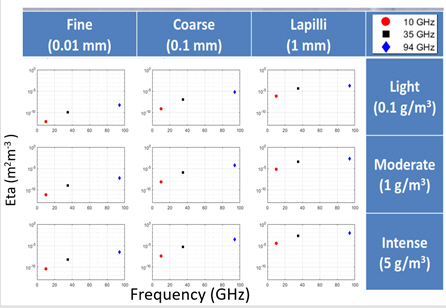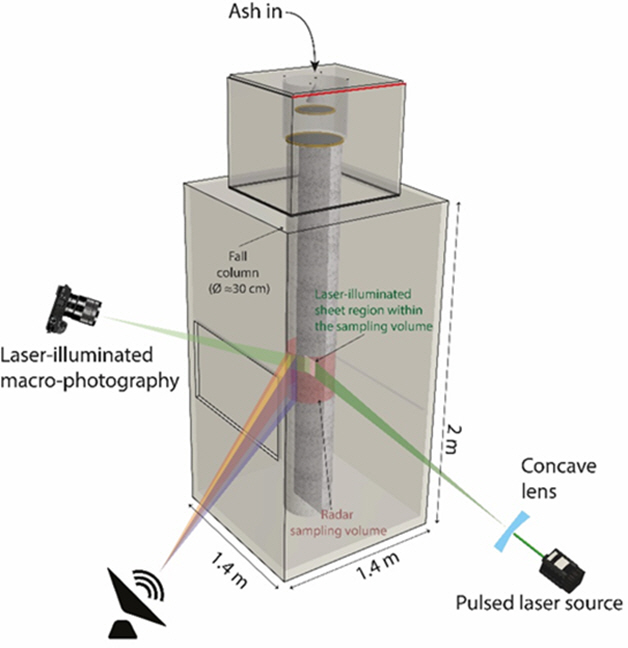Volcanic ash
R4AsH: Radar-supported Next-Generation Forecasting of Volcanic Ash Hazard
Airborne ash generated by explosive volcanic eruptions can be dispersed over large areas across the globe presenting a significant danger to aircraft through damage to jet engines. Aviation authorities currently combine estimates of ash released into the atmosphere with meteorological data and models to predict where is dangerous to fly. However, quantifying the actual amount and size of ash particles released into the atmosphere by a particular volcanic eruption, known as the ‘source term’, is difficult and estimates often have large uncertainties. This hampers our ability to accurately predict dangerous ash concentrations in the atmosphere.
Ground based radar offers the means to remotely measure ash but a conventional single frequency radar is limited by ambiguity between the contribution of particle size distribution (PSD) and mass loading in the plume. This means that one of these parameters must be assumed rather than measured directly leading to uncertainties in forecasting eruption hazards.
The aim of our component of the R4AsH project is to use a triple frequency FMCW radar to resolve this ambiguity by simultaneously characterising falling volcanic ash in a laboratory-controlled environment at three different frequencies: 10, 35 and 94 GHz.

The radar experiments are being carried out in collaboration with volcanologists at Lancaster University. Our colleagues at Lancaster are building an ash fall chamber which will deliver controlled quantities of volcanic ash and other test particles into a free-falling vertical column that will be measured from the side using our triple-frequency radar. Pulsed laser illuminated macro photography will provide ground-truth data on particle sizes and shapes in flight and a mass balance at the bottom of the chamber will record the mass of falling ash. The radar system uses a common DDS-based chirp generator, multiplied and upconverted to the three chosen frequencies, with transmit-receive pairs of feedhorn antennas for each frequency. These antenna pairs are directed at a common target volume so that the falling ash can be measured simultaneously at the three frequencies.


The overall aim of the R4AsH Project is to develop new algorithms to measure PSD and mass loading from radar data for use in future volcano monitoring systems.
Researchers: David Macfarlane, Duncan Robertson
Project funding: NERC, NES003622/1, Feb. 2019 – Summer 2023.